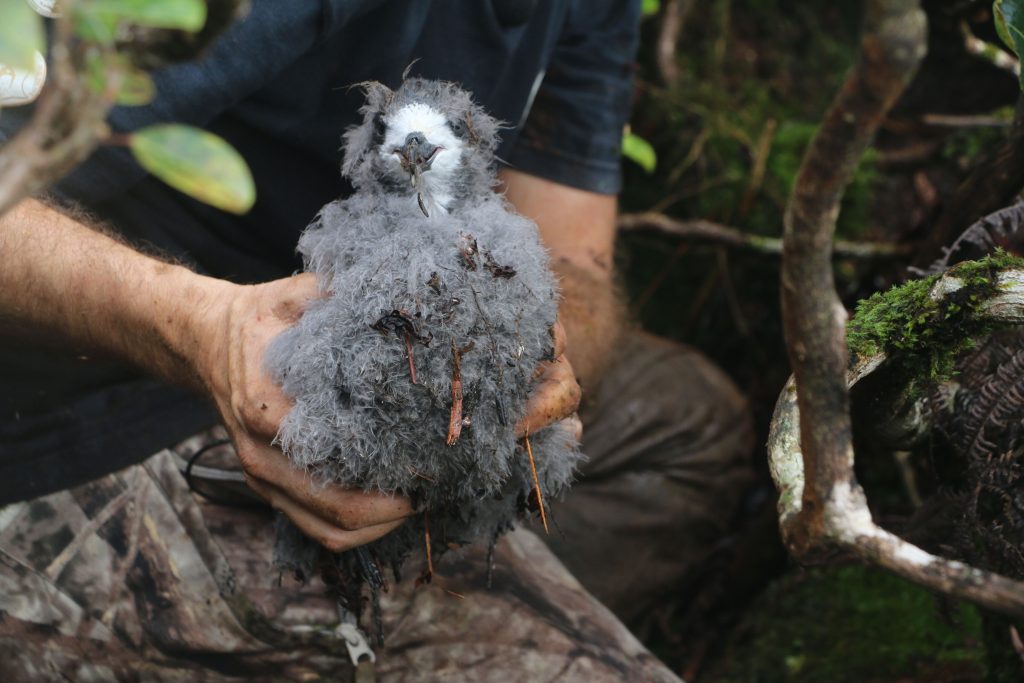04/18/19-`UA`U NIGHTS: LISTENING TO SEABIRDS AND NAVIGATORS, HELPING ONE ANOTHER TRAVEL THE OCEANS
Posted on Apr 18, 2019 in Forestry & Wildlife, sliderNews Release
| DAVID Y. IGE GOVERNOR |
SUZANNE D. CASE
CHAIRPERSON |
For Immediate News Release: April 18, 2019
`UA`U NIGHTS: LISTENING TO SEABIRDS AND NAVIGATORS, HELPING ONE ANOTHER TRAVEL THE OCEANS
(Makawao, Maui) – Seabirds have helped traditional navigators find land and fish for centuries. Now young seabirds need us to give them back the dark night skies, so they may find their way out to sea. The Maui Nui Seabird Recovery Project, Maui branch of the DLNR Division of Forestry & Wildlife and The Friends of Haleakala is hosting a two-night program, “’Ua’u Nights”, April 26th and April 27th, open to everyone.
You can learn about `ua`u, or Hawaiian petrels, and see their amazing aerial acrobatics, listen to their unique calls, learn about their role in Polynesian navigation, and the simple ways everyone can help perpetuate this endangered species and cultural resource.
At the Maui Kamehameha School’s Charles Reed Bishop Learning Center on Friday, April 26th, at 7:00 p.m., former Hikianalia navigator Kala Baybayan-Tanaka of Hui O Waʻa Kaulua (a Hawaiian voyaging society) will share how seabirds help navigators. Modern light pollution confuses young seabirds. Lights on land can look like stars or moonlight on the water, so they circle over flood lights around condos, hotels and big store parking lots until they are exhausted and drop to the pavement where they fall prey to cats, dogs, and cars. For eons, both people and birds have used starlight to navigate. Now, over-lighting and wrong-lighting is ruining this centuries-old resource for all navigators, “When in the range of land birds help to clue us in to where land is. Out at sea our winged friends always reassure us that we are not alone,” said Baybayan-Tanaka. Light pollution affects modern astronomy as well. Jay Penniman of the Maui Nui Seabird Recovery Project will also speak about the bird’s biology and how we can all change our lighting to protect this endangered species.
On Saturday, April 27th at 7:00 p.m. join the sponsors and biologists inside Haleakalā National Park, for a “look & listen session,” to experience the unique pre-breeding flight rituals and haunting chorus of `ua`u as they return to their alpine colony. Please dress for cold temperatures and national park entrance fees apply.
Everyone can help. Remember: “Low, Long, & Shielded”. For outdoor lights, keep them as LOW as possible, and angle or point lights downward, always use LONG wave length (warm colors) lights, and use SHIELDS to direct light toward the ground.
Use timers or motion control lighting to keep things naturally dark until light is really needed. When shopping for outdoor bulbs, be sure to buy only LEDs that are 2700 kelvin or less, this way you will get the longest wave length light and minimize the short wavelength or blue light that scatters in the atmosphere.
Talk to your neighbors, condo and hotel managers and let store managers know there are ways to light parking lots to make them safer for the birds and save energy without compromising safety for people.
For more information about the programs, contact the Friends of Haleakala at: https://www.fhnp.org/
Report downed seabirds at: https://www.mauinuiseabirds.org/ or call (808)573-BIRD (2473).
# # #
Media contact:
AJ McWhorter
Communications Specialist
Hawaii Department of Land and Natural Resources
[email protected]
808-587-0396 (Communications Office)
